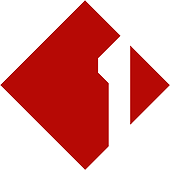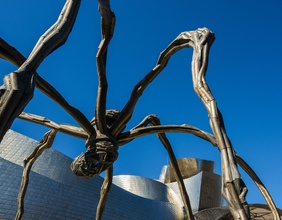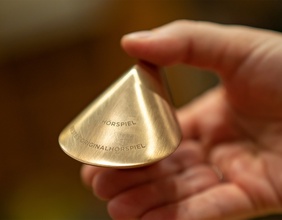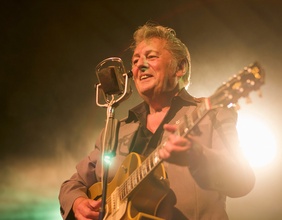Freak-Casters: Debora Maboya - Inklusion mit Comics und Animationsfilmen
FreakCasters - Menschen, Geschichten, Leidenschaften.
4. Oktober 2024, 12:07
Herzlich willkommen zu einer neuen Folge von FreakCasters - Menschen, Geschichten und Leidenschaften, sagt Udo Seelhofer. In unserer heutigen Folge stellen wir euch Tai Tansania vor. Tai Tansania ist eine Organisation, die durch Storytelling über die Bedürfnisse von Menschen mit Behinderung aufklären und junge Menschen auf richtige und falsche Verhaltensweisen ihnen gegenüber hinweisen möchte. Dafür haben meine Kollegin Sandra Knopp und ich uns mit Debora Maboya, Head of Operations and Programs bei Tai Tansania, getroffen. In dem auf Englisch geführten Gespräch erzählt Maboya uns, wie Tai Tansania in verschiedenen Medien wie Animationsfilme, Comicbücher oder auch Hörspiele produziert, um eben damit ihre Botschaften bei jungen Menschen zu verbreiten. Dabei erzählt Maboya auch, wie es ist, in einer von so jungen Menschen geführten Organisation zu arbeiten. Das Gespräch fand im Rahmen der Zero-Project-Konferenz in Wien statt.
What exactly is Tai Tansania and what does this organization do?
Tai is in existence since 2013. And back in the day, when we started this initiative, our main focus was really to engage with young adolescents in the school so that they can be able to access education through raising awareness on the challenges that are encountering. So before, we used to go to the school, having dialogue conversations with the students, but it was boring. You can find you're in the school with a student of 50, 50 students, in the beginning. But as the time goes, they become tired. Then a teacher comes and speaks to them, the summer of like what you're doing. So we went back to the drawing board and say, how can we come with an innovative approach to engage, to get to the minds of the young people? So that's why we came up with the 3D animation video, innovative approach to really engage with young people on the challenges that are affecting them, through story-telling.
Yeah, we saw a story, just before you entered, a very, very exciting movie. It was a girl and a bus, they were celebrating one moment, and the next moment, there was a crash. And the next scene you saw the girl in the wheelchair, right?
Oh yes, yes. I think one of the things that is very important for each one of the persons to know is really the modality of creation of our content is based on human-centered design approach whereby our target beneficiary is actually at the center of the story. And even the story that we're just talking about is a real story about one female girl in Tansania, who really, she's living with physical disability and she's really a successful person in basketball. And so when we were doing the story development process we went to engage with people with disability. We heard her story and it was so touching for us and we wanted to use that story to speak to other young people encouraging them, especially for the people with disability. That they can still pursue their career but also for other people who do not have disability to be more supportive. Because they really need the supporting system. Just like how you saw in the animation. So I think the beauty of the content that we have produced they talk about the real life issues about people living with disability within our community members.
You mentioned before that Tai Tansania is a youth-led organization. What does that mean exactly? How does this work?
Oh yes, when I talk about it as a youth-led organization basically the majority of the people in the Tai team they are actually not more than 35 years of age. So they are just young people who are really passionate to navigate in animation world but really impacting the community through the work that we do. So when you think about youth-led is more of we are just young people making impacts within our community through the creativity that we are doing.
How many people are there in the youth-led organization?
Oh yes, so we have a total of 25 young people. Back in the days we were working as an organization and looking at the sustainability of the project we also tried to develop a company. So which is also in that angle we also more of the sustainability of the project to receive projects that can help support the organization in terms of operational and administration costs. So basically we are 25 people in the team.
How do you create the content? I saw the movie earlier and the comic books etc. How is this created?
Oh yes, I always love this question of creativity of the content. So our creation of the content goes through different phases. So we have the story development part. This is the first process of our content creation. And what we do we go to the schools to the young people that are our target beneficiaries. And we conduct story collections. So more of having interviews, focus group discussion In-depth interview to gather what are the key challenges that young people are encountering within our communiTais. So when we get those stories, we come and develop a script. So once we develop the script, it goes through two workshops technical and creative workshop. So whereby we bring different expertise. So okay, we are talking about animation focusing on people living with disability. So we bring experts working in NGOs with people living with disability, we'll invite government people but also the technical team to come and review the content and see how relevant it is to the beneficiaries that we're targeting. After that, we go to the next step: Now it's the production of the content itself. Now the script has already been reviewed so we now go to produce the content and when the content is produced, we bring it back to the target beneficiary through conducting school outreach program but also community engagement through traditional social media platform utilizing the content so that many people can be able to see it.
How long does it take to, for example, make a movie like The Story of Meera?
Back in the day, when we were starting creating the content we took like 6 to 7 months in producing the animation. But right now we've been able to increase the manpower so at least we take 3 to 4 months in producing the animation. This is all the process what I'm talking about.
And are the videos and the comic books just available in your country or in other countries as well?
So, currently they're just available in our country. Specifically our animation, you can access them via our YouTube channel “Tai Animation”, you can access them there. And regarding to the comic books: So the comic books and the radio drama is the duplication of the animation. We normally disseminate it in the school's library. So it's more the sustainability of the project even when we are not there.
Okay, I think we put the links to the movie in our show notes as well. You just said that you're collecting the stories when you do interviews. Was this also the way how you found the story for the movie?
Oh yes, yes. So for instance, the story for the movie for Najiamini animation we really got when we were engaging with different people who were living with disability. So we had their stories. There were so many stories that we shared. But we found this particular story of a character now is Mira. It was the most, more impactful and more touching than the rest of the stories. So we said maybe we can start with this for now. But there are so many stories that are there to be shared. And if you can see, most of our animation are five to seven minutes. Our main goal is to spark a conversation around disability issues.
And you want to empower the people, right? You want to show how life is possible, right? Did I understand it right?
Yes, yes. So if you look at our animation, we have two aspects what we want to do: First and foremost, we want to raise awareness to the community. Because there is a lot of stigma surrounding people living with disability. People are not supportive. Especially for instance in school areas young people who do not have disability they can mock people with disability. They can speak words which are really hurtful. But also looking at some of the infrastructure. So we are trying to speak with the government, we are speaking with the parents. We are speaking with the fellow students so that they can be supportive. But also we are speaking with the person with disability so that we can build their confidence. And tell them: You can do it!
It also sounds like you need to be very persistent and very paTaint to reach awareness, am I right?
Yes, yes. Actually, it's something that takes time to measure it. So, what we normally do is really to measure the intention to change. So when we normally showcase our content we engage with the young people and see what kind of a mindset they've been able to change. But really looking at the longer time I think it's really important for projects such as this Najiamini Animation to be for so long so that we can really be able to continue to impact the community. So that we can see the change that we are making through the content that we create.
Yes, yes. Actually, it's something that takes time to measure it. So, what we normally do is really to measure the intention to change. So when we normally showcase our content we engage with the young people and see what kind of a mindset they've been able to change. But really looking at the longer time I think it's really important for projects such as this Najiamini Animation to be for so long so that we can really be able to continue to impact the community. So that we can see the change that we are making through the content that we create.
How can creative storytelling lead to behavioral changes?
Yes, so I think creative storytelling first and foremost, I think the use of creativity especially the 3D animation in our content I think it's the most innovative tool and impactful tool to transmit information from one generation to another. And really, it's very effective to reach to the community. Because, if you see the majority of the content that we create they educate but also they entertain. So we bring the education in the content but also there is entertainment on it. So when most of the people see our animation it's really a sparkle conversation. And we talk about what are the issues that we are going to in our community. And I think for me it's the beginning of inspiring behavioral change within our community members. Because if people are starting to talk about the issue that means there is a promise of tomorrow. There is a promise of young boy and young girl who has disability and nobody is listening to them. And they don't have the supporting system.
I think it's also good so that change will be here to stay. It will be persistent.
Yeah, yes, yes, yes. And I think the beauty of the content that we create is: They are lasting. So they can be accessible in our social network. And currently we want to see how we can be able not only to create a desktop application and be able to install a computer in schools. So that students can be able to access our content more easily. But also we're trying to find how we can be able to utilize community engagement dialogues and events. So that we can continue to mobilize with the community members. It is just like when we go to church on Sunday. Every day we hear the word of God. But things keep on repeating. The same time, why are we repeating? It's because people need to hear every time so that they can be changed. I think the same applies to the behavioral change that we want to see to the community. It's just the persistence of engaging people on these conversations.
I think it can also be frustrating at times: I have to say this again and again and again and again. And it still changes very slow. So, how do you cope with that?
Of course, frustration always comes along the way sometimes. But I think it is very important to understand: Who are the key players to work with? Because sometimes you might be using a lot of energy because you're doing it alone. But you need to find the key players. Who can help you in raising awareness and really impacting the community? For instance you need to work with the government. The government are the people whom our community members are looking at them as decision-makers. If they say, if they endorse something people will pay attention to them. You need to work with the parents. The parents are the ones living with the children with disability. You need to talk to the teachers. They're the ones really day in, day out working with the students. You need to talk to people who have influences in the community. More or less looking at the ecosystem and really when you have the right people with you it becomes even much less easier. Because even if it's something that you'll keep on doing day by day but if you have the right people to help you then it becomes more of something that you enjoy doing. Because you can see: You have a lot of people supporting the initiative that you're doing.
And what are your next goals? What's happening?
Yeah, so I think what next for Tai? So I think what next for Tai is for us to continue to do what we do best: Produce more content, reach more people and impact more people within our community members. But also, we are looking to partner with many organizations who really think that this kind of modality or methodology that we are using could really benefit their community. For instance, I remember even last year we had somebody from France. They really loved one of our content and they used it and duplicated it and translated it in their own language. And for us, that is a plus. Our content are free. We just want them to be reached to as many people as possible.
How long did it take to make the movie?
This particular movie, Najiamini Animation, it took three and a half months.
And when was Tai Tansania founded?
Tai Tansania was founded in 2013. We started using animation in 2017.
How did you come to the company? What was your way in? What's your background?
Now it's becoming personal. I have a background in law. Actually, I'm an advocate in profession. But when doing my volunteerism work immediately after I was in school I got a role in an organization. Despite they were doing human rights issues within the community. But it was more an NGO sector. So when I went in that direction I was so much interested with community issues. Okay, now this is the path I want to take I don't want to practice. But I want to go to the community members. So I joined Tai back in 2019. And currently at Tai as I said, I'm the Head of Operations and Program. And I think over the years I've been able to really grow in the role not only the role that I'm doing but also I'm so passionate with what Tai does. Because as I said again, it's a youth organization. We have a lot of creativity and ideas what we really want to do with our community. And really we... Day in, day out we aim to find people who really believe in our dream or in our innovative ideas and who can join forces with us to make impact within our community. That is the joy.
It must be very exciting to work with those young creative minds, isn't it?
It is very very exciting. Even in the morning, when I was doing my presentation they were all online watching me, everybody sending their videos. They were so happy about what we have been able to do as an organization- We normally have a saying which is: Team Tai, we fly high! And I think that is the motto and that is what we want to do. We continue flying high in everything that we do.
Very inspiring story. Thank you very much!
Thank you very much!
Das war FreakCasters für heute. Wenn euch der Podcast gefallen hat, dann empfehlt uns doch weiter und folgt uns auf Facebook, Twitter und auch auf YouTube. Außerdem würden wir uns über eine gute Bewertung auf der Podcast-Plattform eurer Wahl freuen. Der im Gespräch zur Sprache gekommene Film “Najiamini” ist auf dem YouTube-Kanal von Tai Tansania zu sehen. Der Name des YouTube-Kanals lautet: “Tai Animation Studios”.
Dann bleibt mir nur noch, mich zu verabschieden: Auf Wiederhören und bis zum nächsten Mal, sagt Udo Seelhofer.




